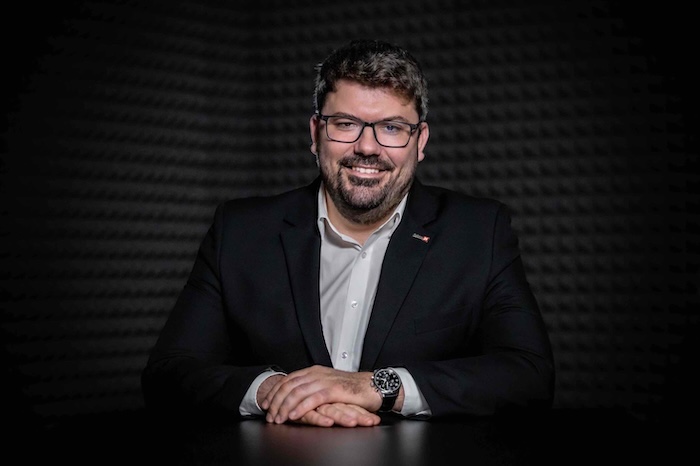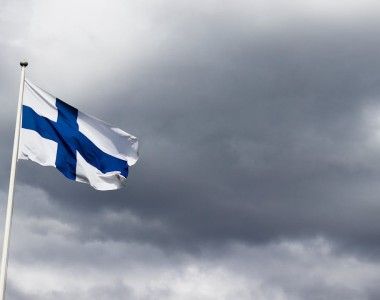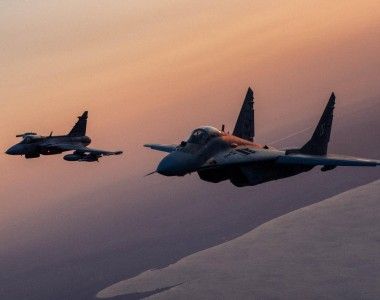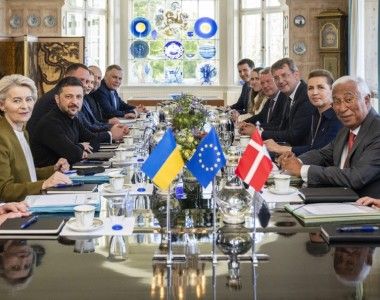Hanwha Aerospace CEO: New Missiles for the Homar-K system
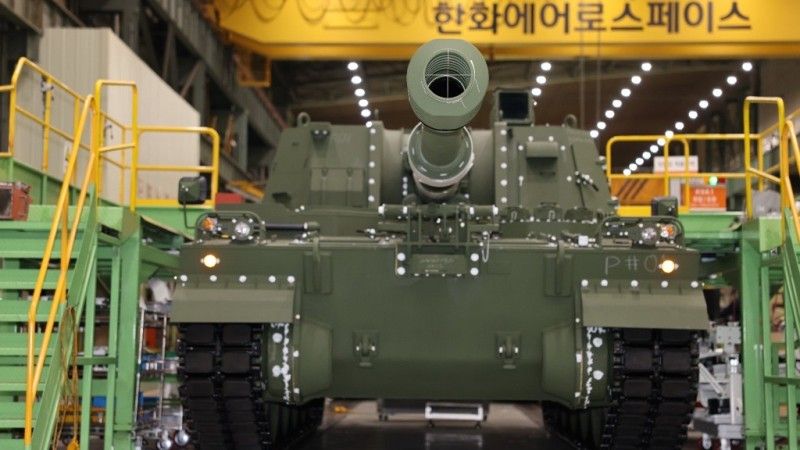
Photo. Hanwha Aerospace
We have plans to co-develop the next-generation automated self-propelled howitzer K9A2, which is expected to be produced by a Polish company - as Jae-il Son, CEO, Hanwha Aerospace told Defence24.pl in an interview. In the conversation plans to integrate new ammunition types for Homar-K/Chunmoo rocket systems are also mentioned.
Jędrzej Graf, Defence24.pl Chief Editor: Poland has been receiving K9 howitzers from Hanwha since 2022 and K239 Chunmoo launchers since 2023. What are the key next steps that you aim to take in the cooperation with Poland?
Jae-il Son, CEO, Hanwha Aerospace: As the most trusted partner for Poland, Hanwha Aerospace put an emphasis on cooperation with the Polish industry for localization programs in Poland.
Following the successful K9 and K239 executive contracts, we are focused on the next steps including local production of 155mm modular charge system through technology transfer. This is already reflected in the K9 EC2 contract signed in December 2023.
We will also develop the K9PL with the Polish defence industry to be supplied in a timely manner between 2026 and 2027.
In addition, we have plans to co-develop the next-generation automated self-propelled howitzer K9A2, which is expected to be produced by a Polish company.
There are some media reports that the 2nd K9 executive contract was conditional on additional financing. And recently Korean Parliament has passed an additional legislation to increase the lending by Eximbank, increasing its share capital, with the stated aim of enhancing defence procurements of Poland in the Republic of Korea. Mr. President, does it mean that the December 2023 contract will proceed automatically, or are there any next steps needed?
The Korean Government is trying best to cooperate with Poland with the increase of the capital from the EXIM Bank.
As for the future process, we understand that the Korean government offered to provide financial support to the Polish MoD and will discuss detailed terms with the Polish Government and banks. Once the contract terms are determined and confirmed, the K9 EC2 will take effect, boosting defence cooperation between the two countries further.
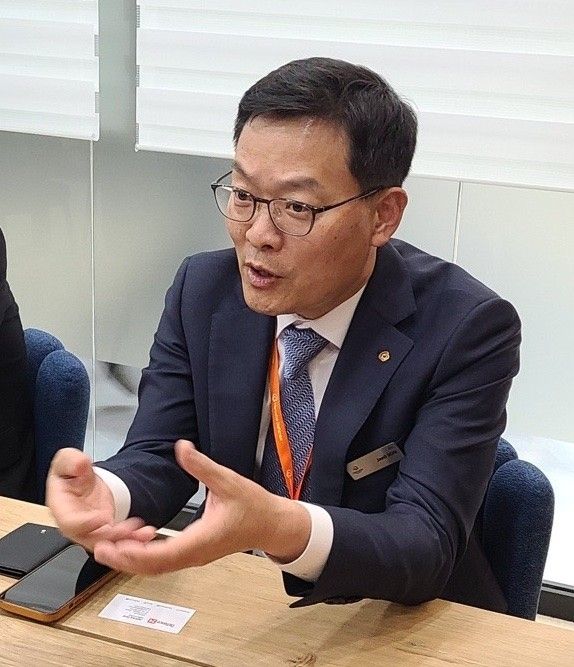
Photo. Defence24
How do you assess the opportunities of Hanwha in Europe, regarding K9 and Chunmoo? How could the Polish industry take part in Hanwha exports, in Europe and beyond?
K9 and Homar-K are proven solutions and are expected to continue to be exported to European countries. Hanwha’s core strategy is to cooperate with local industries and maximize the industrial benefits to the customer nations.
For example, when exporting the K9 self-propelled howitzer to Norway, we developed and delivered the K9 self-propelled howitzer by applying parts from an industrial company located in Norway and exported it to a third country using the parts under joint marketing campaigns.
It will be the same cases in Poland. We plan to export weapon systems, ammunitions, and Rockets to third country by applying parts or system developed and manufactured by Polish industries.
Through these steps, Hanwha will not be a simple equipment supplier to Poland, working with Polish industries in a variety of ways. We’re fully committed to creating a new collaborative business model through cooperation and grow together by generating mutual profits such as export to EU countries.
How do you assess the prospects of Hanwha Aerospace both in military industry and beyond? And what role can the industrial cooperation with Poland play part here?
I understand Poland has very actively and successfully engaged in cooperation with the Korean industry beyond the military sector. There is a Korean-built world-class battery manufacturing facility in Poland, and many other big-name companies have entered the Polish market under industrial partnerships.
A key industrial partner with Poland in the defence sector, Hanwha Aerospace operates a wide variety of businesses for potential collaboration with Poland, such as aircraft engines, satellites, space rockets, and other energy solutions. So I expect more cooperation to be made in the near future.
To that end, Hanwha is committed to any cooperation with Polish industries based on the efforts of technology transfer and local production.
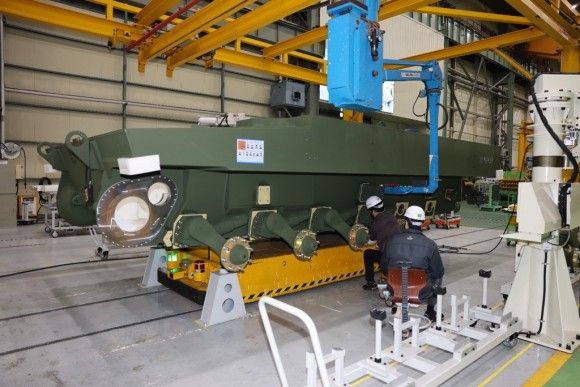
Photo. Hanwha Aerospace
Let me focus on K9 for a while. What is currently the overall production capacity of Hanwha Aerospace for the K9 howitzer?
We have a production capacity of nearly 200 howitzers per year, and the capacity will increase further since we’re dealing with more and more requests for production from foreign customers such as Poland, Finland, and Norway.
With the Polish K9 contracts, we added one more production line last year, so that we operate two assembly lines now. By the end of this year, we will add one more to increase production capacity further.
How do you meet meet such production capacity requirements, while maintaining quality?
We have very strong relationships with local suppliers, as over 85 percent of K9 parts are manufactured in Korea under a very well-functioning supply chain. We are developing even core parts such as powerpack indigenously, which will result in easier and faster delivery of products without much restrictions.
Our configuration management is tightly controlled by the government guidelines. For example, if we want to change small parts of the K9, it’s not easy to change them immediately. It takes at least three months to change the parts. The Government of Korea always ask why you need to change those things, and we’re supposed to respond with a substantial number of documents for reporting the reason why. This long and complicated process eventually makes the quality of products remain high.
What is the lead time from order to delivery, for K9 howitzers?
Once ordered we can make one Self-Propelled Howitzers normally within 18 months, but if customers want faster delivery, the production line can be flexible to make it shorter to 12 or 13 months. Currently, at the assembly lines are in full swing, as one K9 howitzer for the Polish Army is being assembled every two or three days.

Photo. Hanwha Aerospace
Hanwha has established K9 User Club where several User Nations including Poland but also Estonia, Norway and Finland are cooperating. Also a maintenance logistic center in Europe for K9 is planned. Have you made a decision where to locate that center and what is the role of Poland?
As the numbers of K9-opearting countries are expanding, the need for effective maintenance logistics for the K9 artillery systems in Europe is on the rise. As a first step to support K9 maintenance logistics in Europe, Hanwha is set to establish its first Spare Parts Center in Poland. The center in Poland has an important meaning that Hanwha will expand exports to the EU and NATO countries through cooperation with Poland, providing logistics support to other K9 user nations in Europe.
Poland is a key NATO country operating the largest number of K9s, so the supply of its own spare parts is absolutely necessary, and we expect Poland will serve as a hub for supplying other K9 user nations in the region with spare parts. Poland is a country capable of producing K9 spare parts, and Hanwha will collaborate with Polish local defence companies such as HSW to provide customer spare parts and maintenance. We plan to quickly supply spare parts to European customers to improve K9 operability and maintainability.
What is the status of K9A2 howitzer, with autoloader, when could it enter the series production? And what are the next steps regarding howitzers, their improvements?
The prototype of the K9A2 has been completed, and it has go through performance tests successfully, and is in the process of further technical improvements. The final development and testing process for K9A2 will be completed in 2026, and mass production will begin in 2027.
Additionally, Hanwha has been pursuing the development of next-generation self-propelled howitzer, featuring enhanced survivability and mobility. Equipped with a fully automated ammunition handling system, the next-generation version, K9A3, is to feature autonomous maneuver, MUM-T technology, extended range and composite rubber tracks.
Poland has been interested in procuring the capability to produce Precision Munitions for Chunmoo Rocket System within the Homar-K project. What are the steps that are needed to be taken in order to establish a production of Chunmoo systems launchers and guided rockets/missiles in Poland?
The proposed HOMAR-K EC2 Contract, which has yet to be signed, will include the technology transfer for production of Chunmoo launcher modules by the Polish defence industry. With this tech transfer, Poland will be able to maintain/sustain the launchers.
In addition, there are ongoing discussions with the Polish government and defence industry over the 239mm Guided Rocket. If successful, Poland will be able to receive the transfer of related technology and the rockets will be produced in Poland, contributing to the growth of the Polish defence industry.

Photo. kpr. Jarosław Kusz/18 Pułk Artylerii
What are the ways you can improve the Chunmoo launchers? Would it be capable of firing new types of ammunition, both made by Hanwha and by overseas partners, for example?
One way that Hanwha is pursuing to improve the Chunmoo Launcher is to introduce new types of rockets/missiles that can be fired. For example, Hanwha can transfer technology of POD manufacturing, and the Polish defence industry can design and manufacture POD for the 122mm FENIX. Hanwha will support the design and integration required to enable the HOMAR-K Launcher to fire the 122mm rockets.
Additionally, there are ongoing discussions with other rocket/missile suppliers for addition of types of ammunition.
Finally, Hanwha is currently developing a 160km-range missile with firing tests planned in 2025 and development work to be completed in 2026. The product will thereby be available from 2027 onwards.
Current conflict such as Ukraine show us very fast evolution of drone warfare. How does Hanwha adapt to that – both by developing its own unmanned systems and by developing defences for vehicles such as Redback, K9?
As drone attacks have evolved in recent conflicts, Hanwha has also added various defensive measures such as surface-to-air short-range rockets, anti-aircraft guns, and jamming guns to defend vehicles. As gradually reducing the number of operating personnel and unmanning the crew through future self-propelled howitzers, we are developing effective ways to enhance survivability against drone attack.
Thank you for the conversation.
